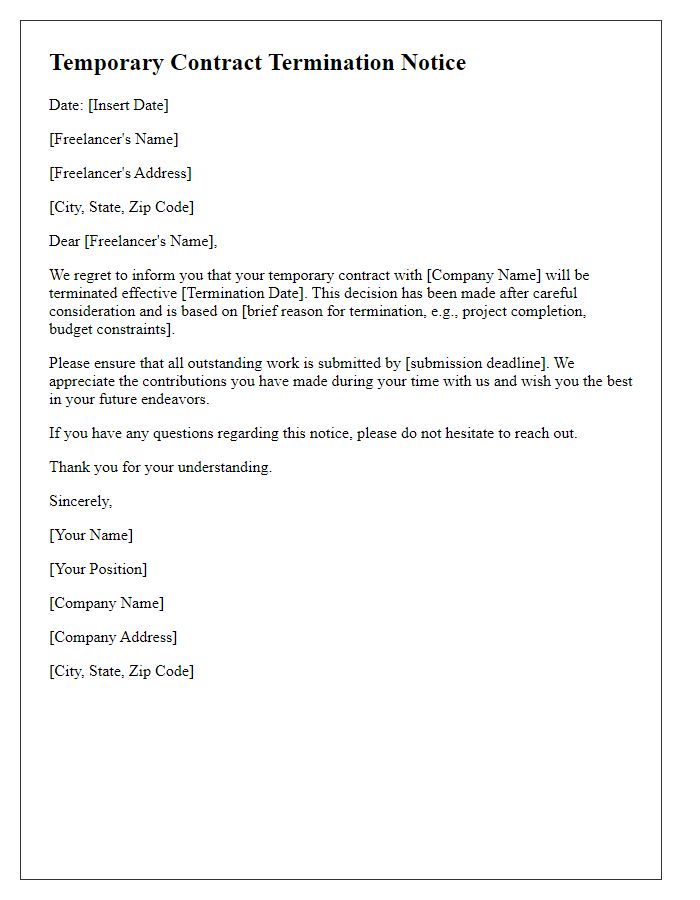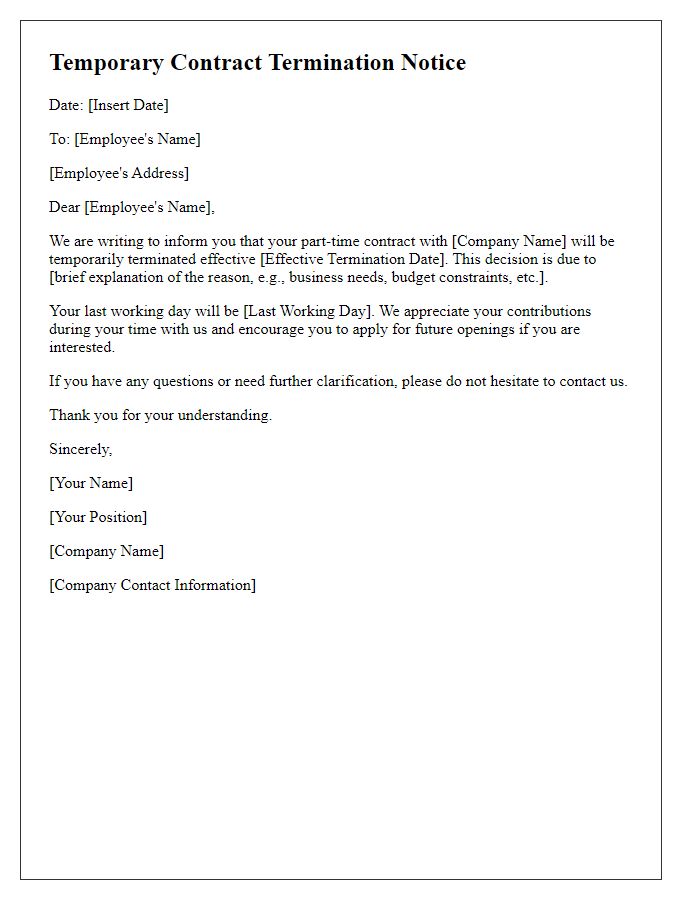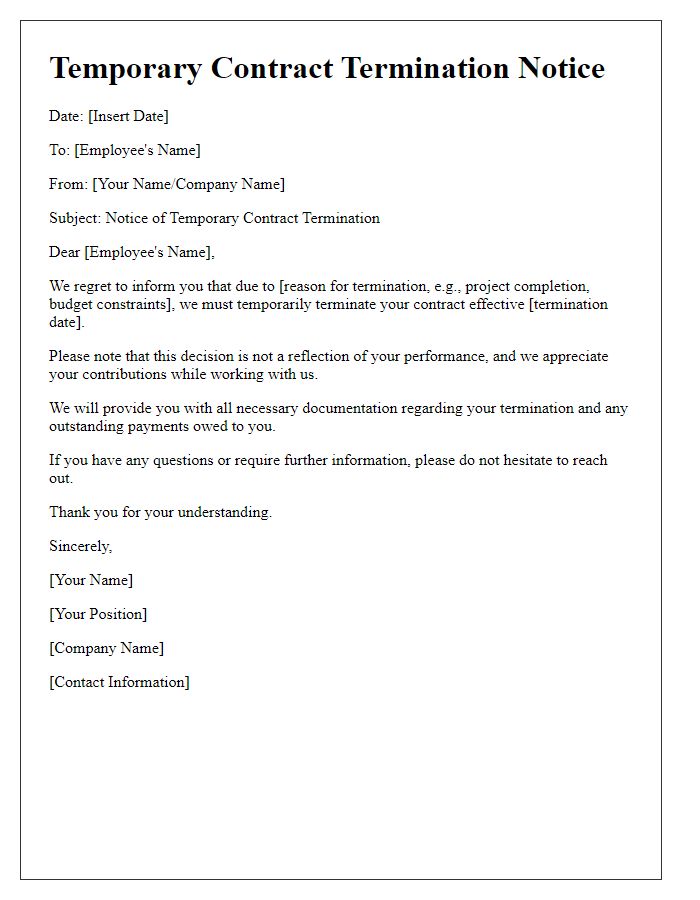Are you facing the challenge of drafting a temporary contract termination notice? It can certainly feel daunting, but with the right guidance, it can be a straightforward process. In this article, we'll walk you through essential tips and a template to help you communicate clearly and professionally. Ready to simplify your experience? Let's dive in and read more!

Clear subject line
Subject: Notice of Temporary Contract Termination This notification serves to inform you of the temporary termination of our existing contract, effective immediately. This decision comes after a review of our current operational needs and circumstances which no longer align with our initial agreement established on [Contract Start Date]. All ongoing projects under this contract will be paused until further notice. We appreciate your understanding during this transition period and will reach out to discuss potential future collaboration opportunities. Your cooperation is valued, and we hope to resume our partnership when conditions allow.
Employee and company information
A temporary contract termination notice requires clear details about the parties involved. The employee's name should be prominently displayed, including the position held within the company, while the company's name and registered address provide essential identification. Specific dates related to the commencement and termination of the contract must be included to establish the timeline. Furthermore, any relevant references to the contract number or agreement details will ensure precision and clarity in the communication. Addressing the reason for termination, if applicable, adds transparency to the process. A contact person within the company should also be noted, facilitating further communication.
Termination effective date
In the bustling realm of employment contracts, a temporary contract termination notice must clearly state the termination effective date to provide clarity to all parties involved. For instance, if the effective date is set for December 31, 2023, this date marks the last day of employment under the current agreement, impacting end-of-year benefits and final paycheck calculations. The notice should include critical information such as the specific job title, the name of the employee, and the reason for termination, which may vary from project completion to organizational restructuring. Maintaining precise and professional language is essential, ensuring that the staff member comprehends their rights, obligations regarding final documentation, and possible entitlements, such as unused vacation days or severance packages in adherence to local labor laws.
Reason for termination
Temporary contract termination notices frequently occur in various contractual agreements. Situations leading to termination, such as non-compliance with contractual terms (including but not limited to deadlines, quality standards, or payment schedules), may arise. Furthermore, external factors like market conditions, unforeseen economic downturns, or force majeure events can also necessitate a termination notice. Entities involved, whether individuals or corporations, must be aware of the specific clauses outlined in their contracts, including notice periods, termination rights, and legal obligations. Ensuring that all communication is documented and aligns with the legal framework is crucial to maintaining professionalism and mitigating potential disputes.
Instructions for final payments/benefits
Temporary contract termination notices require clarity regarding final payments and benefits. Employees should receive detailed information outlining the payment structure, including wages for the final pay period, unused vacation days, and any other outstanding reimbursements. Benefits like health insurance coverage, which may expire on the last working day or continue for a specified grace period, must be explicitly mentioned. Employers should provide details on the timeline for final payments, potentially up to 30 days post-termination, in accordance with state labor laws. Documentation regarding the transfer or continuation of retirement benefits should also address options such as rollover into an IRA or a pension plan. Clear communication ensures understanding and helps prevent disputes.
Letter Template For Temporary Contract Termination Notice Samples
Letter template of temporary contract termination notice for freelancers.

Letter template of temporary contract termination notice for contractors.

Letter template of temporary contract termination notice for part-time staff.

Letter template of temporary contract termination notice for project-based roles.

Letter template of temporary contract termination notice for remote workers.

Letter template of temporary contract termination notice for seasonal workers.

Letter template of temporary contract termination notice for short-term assignments.







Comments